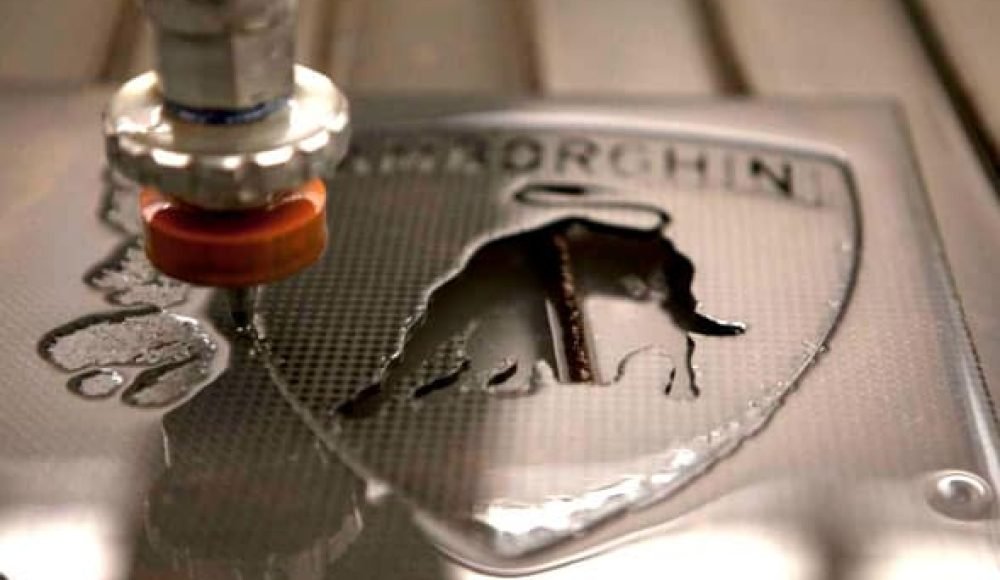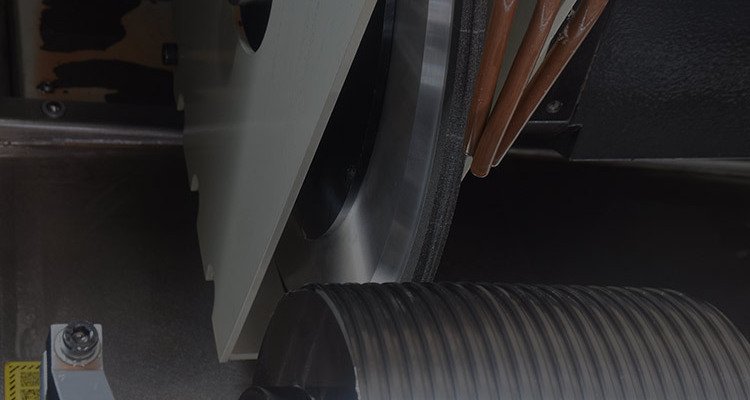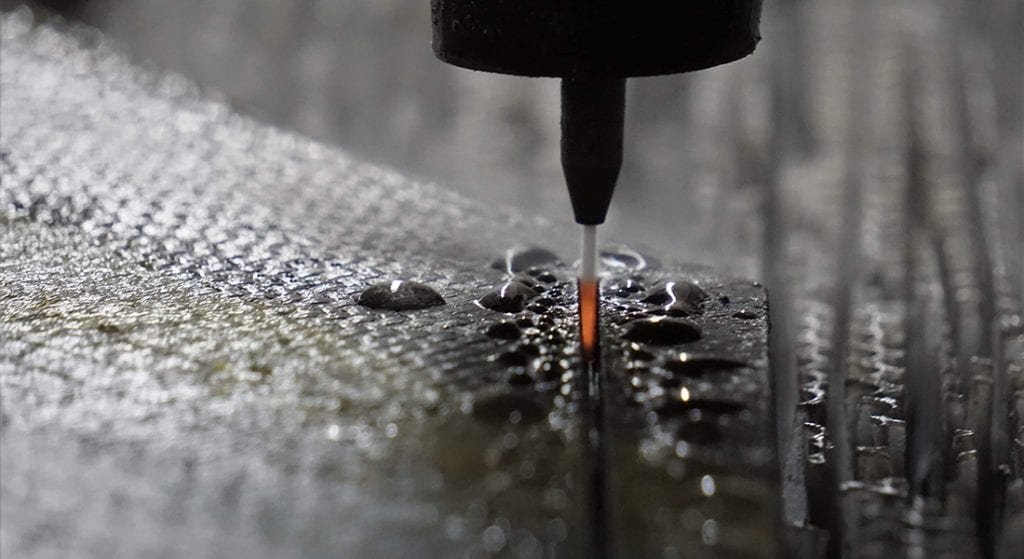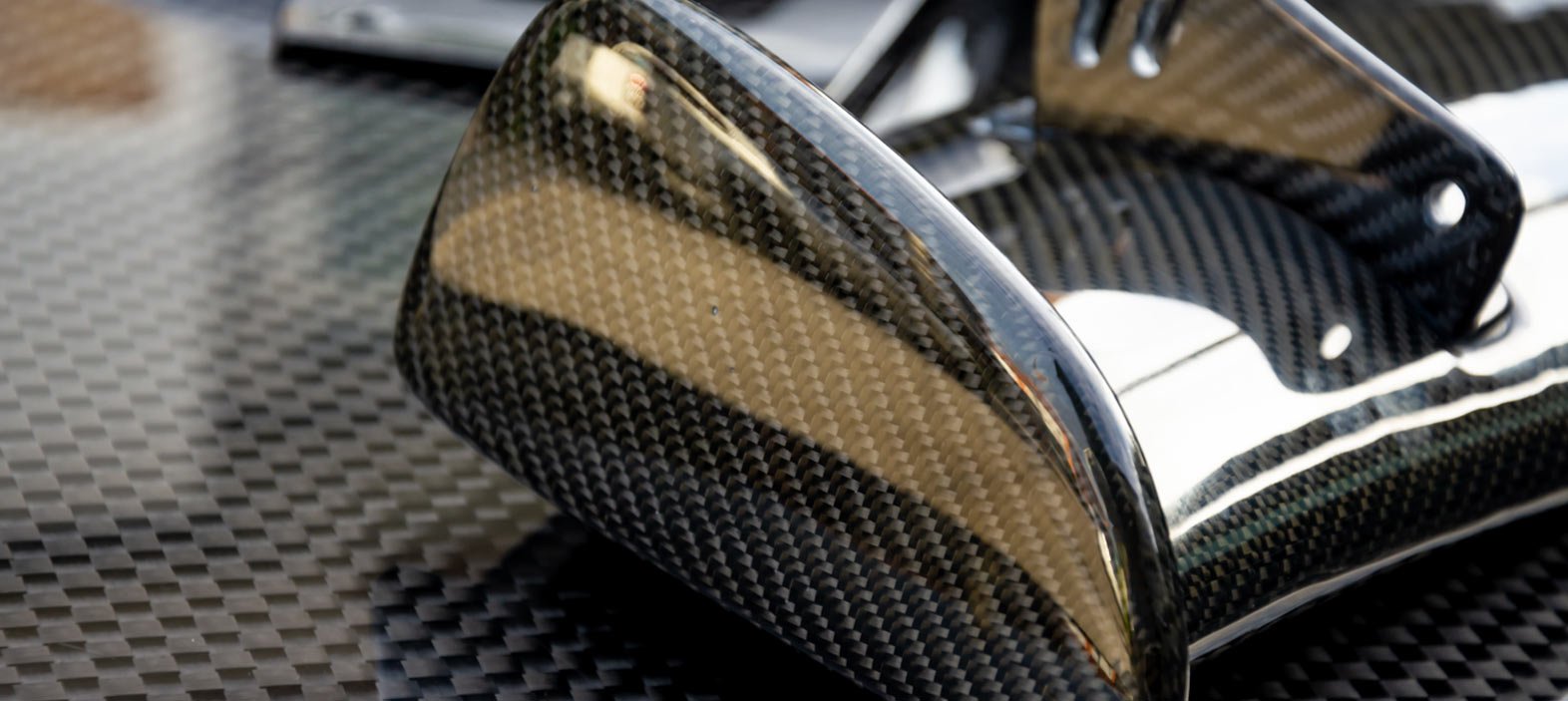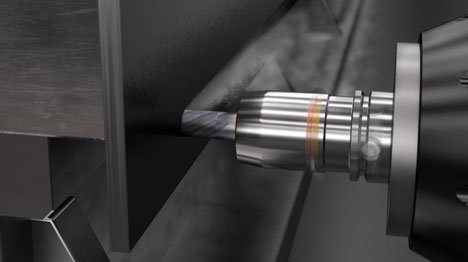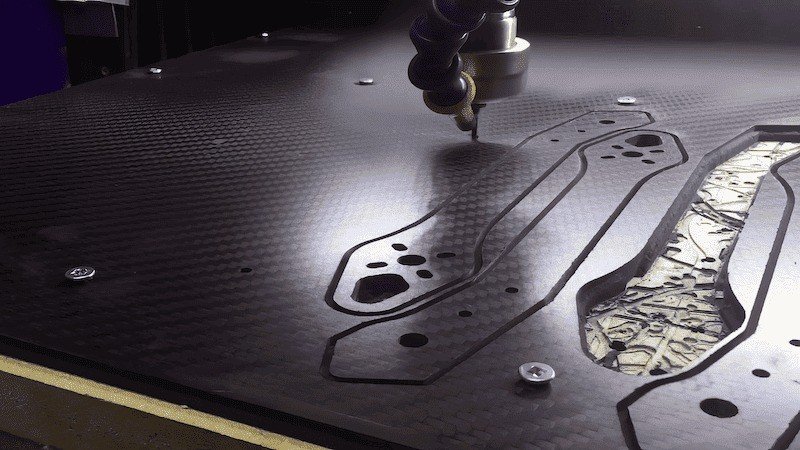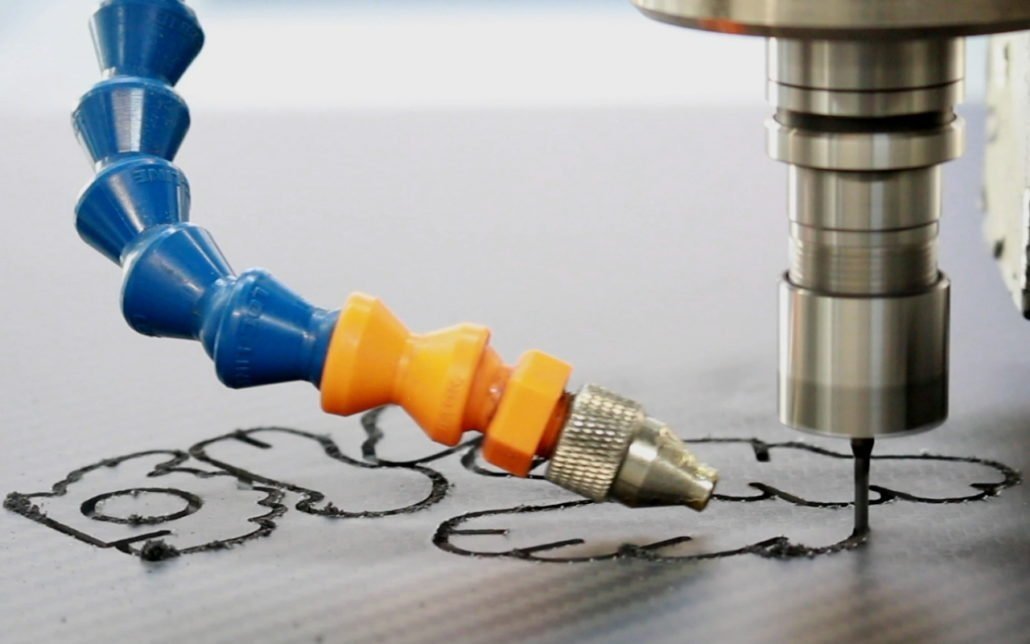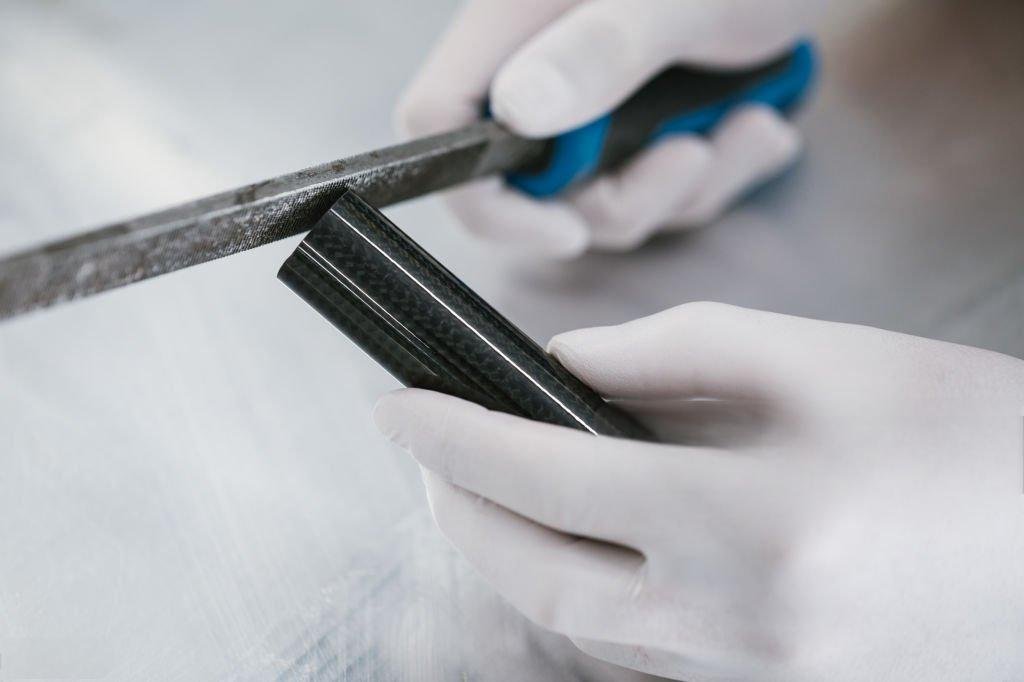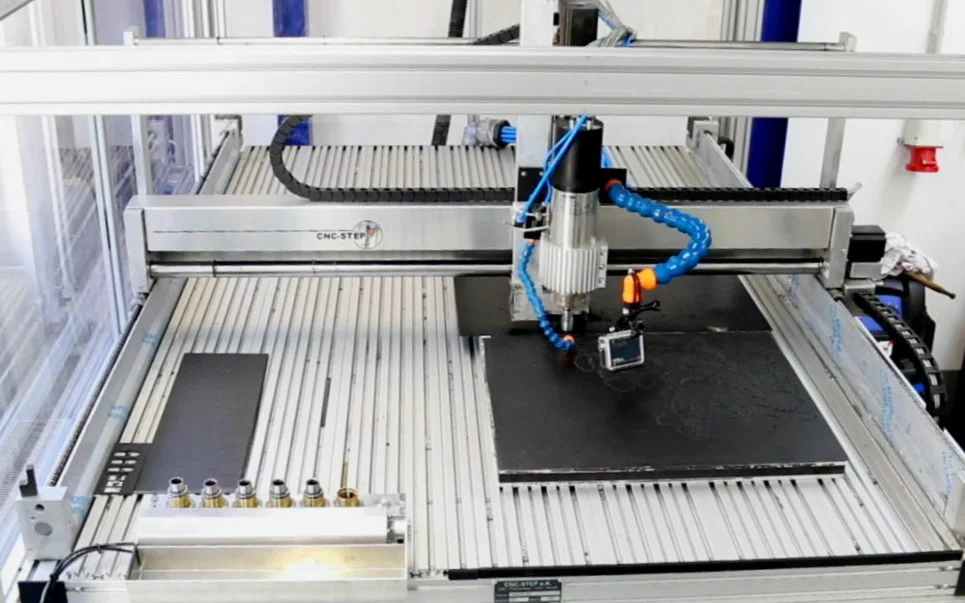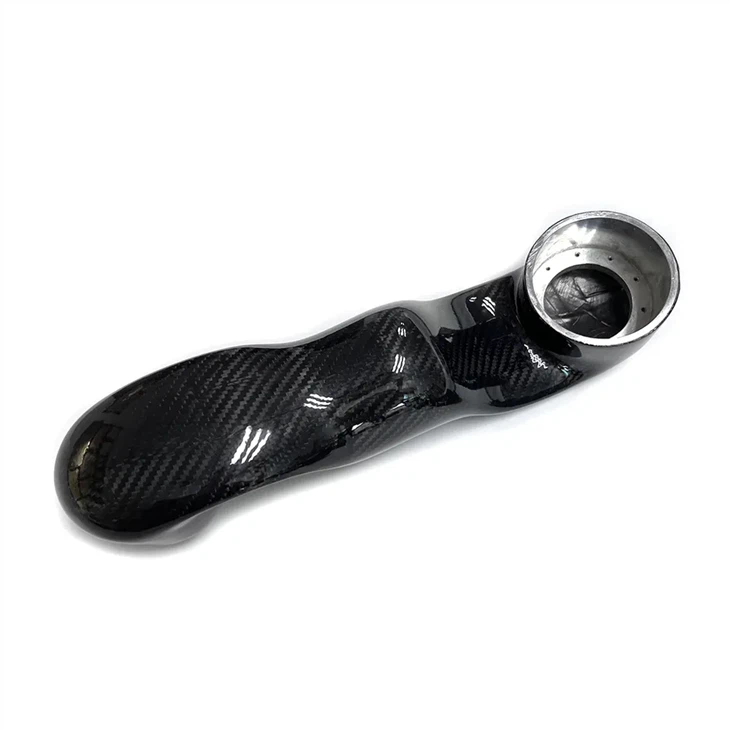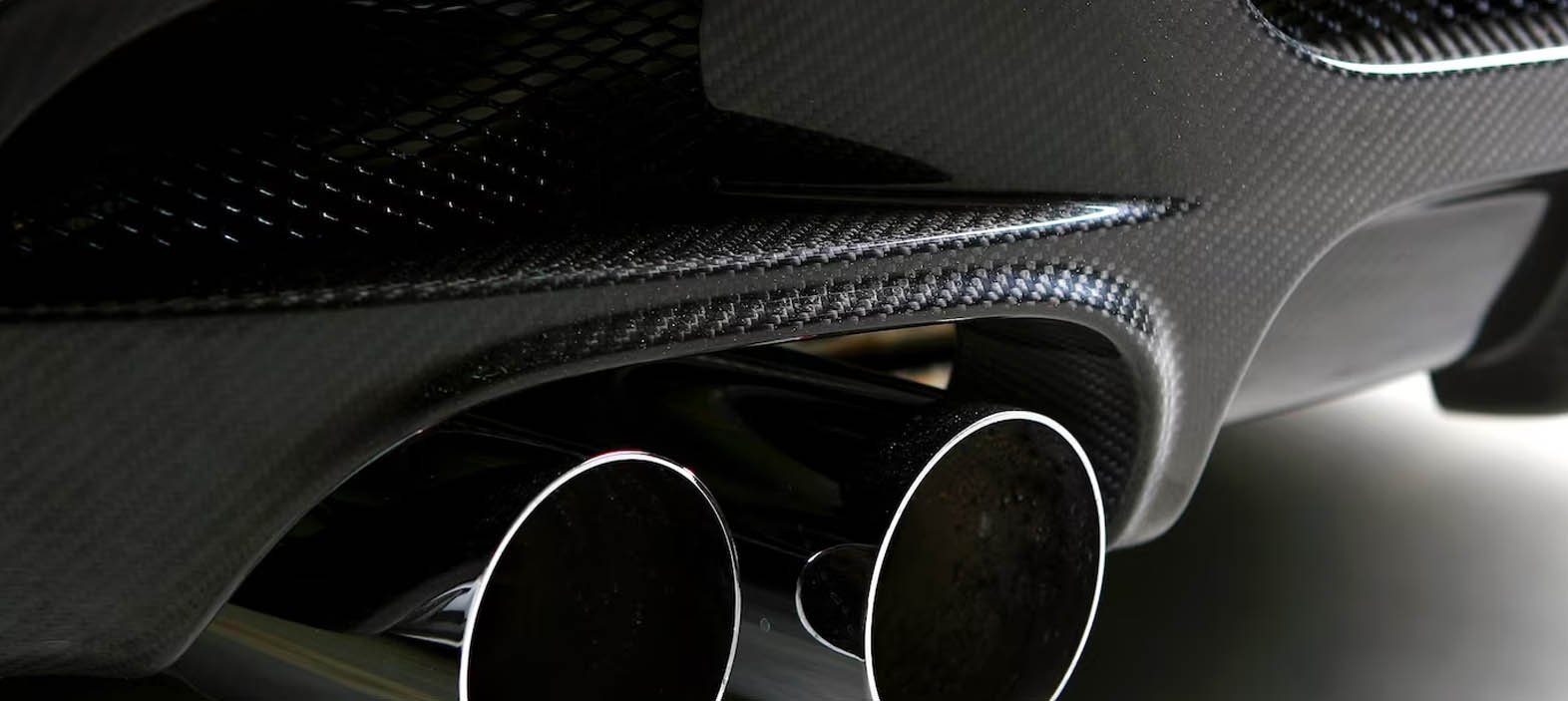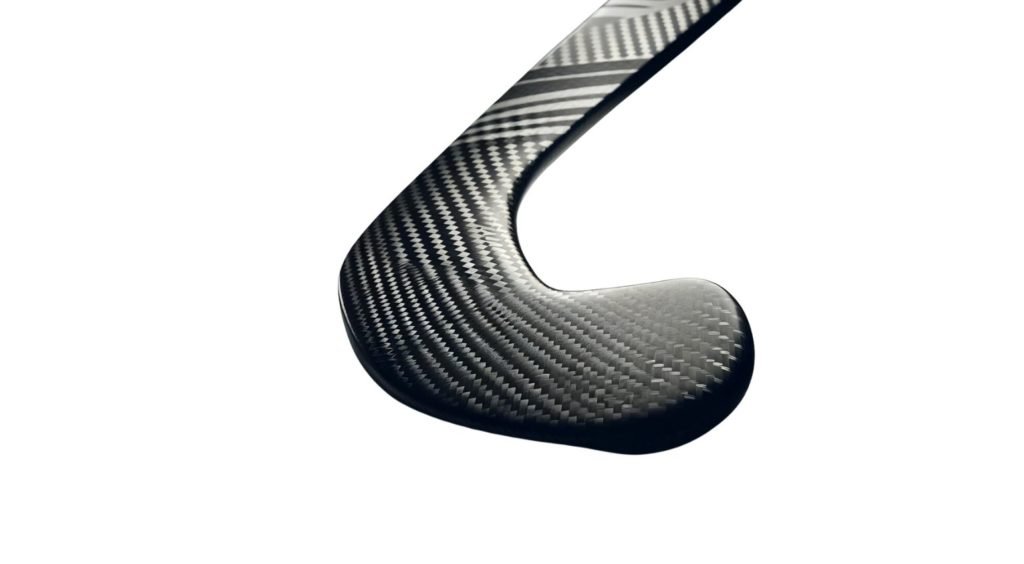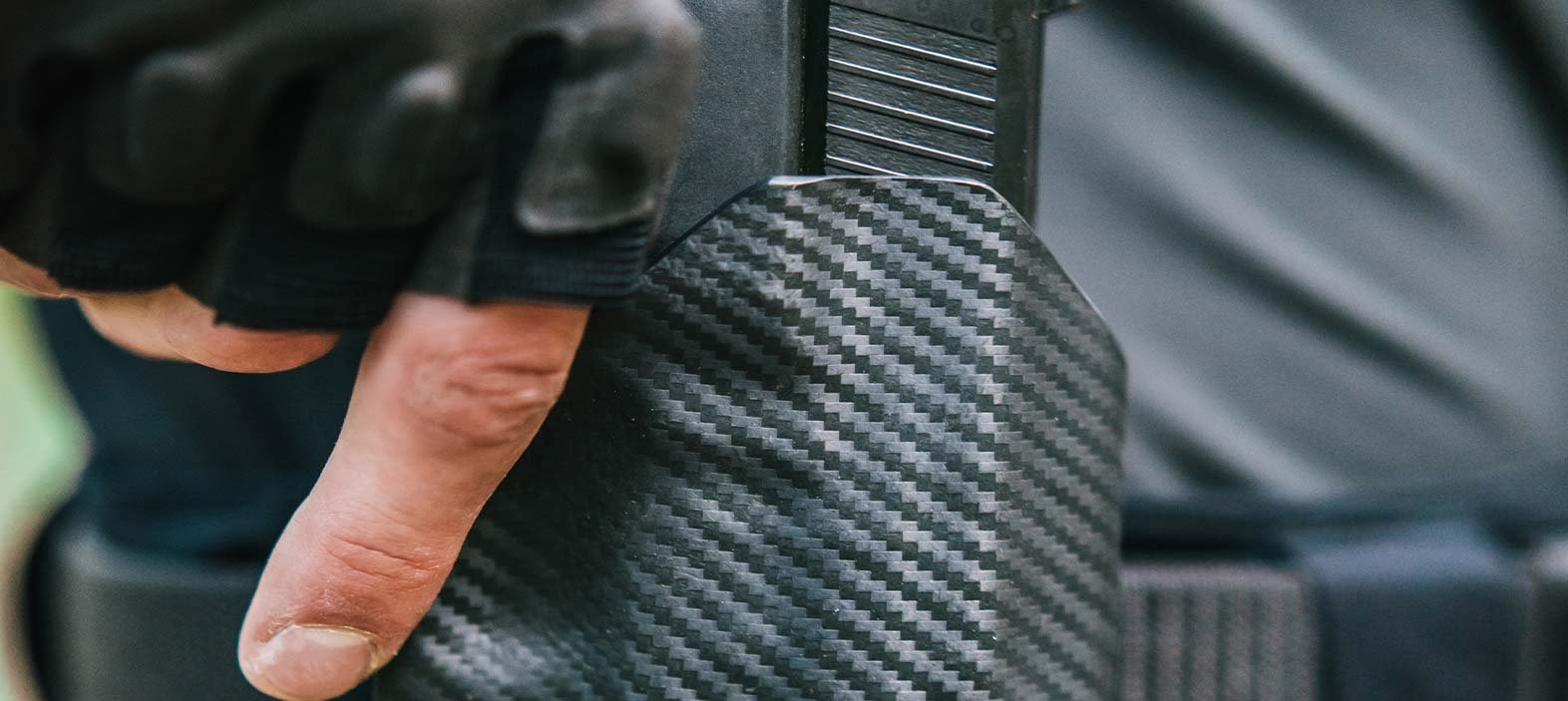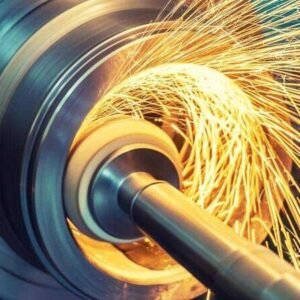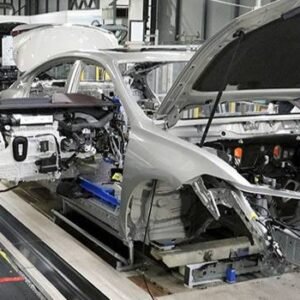La fibra de carbono ha revolucionado la ingeniería moderna mediante la entrega de una combinación inigualable de construcción ligera y resistencia mecánica extrema. Desde aeroespacial y automotriz a robótica y equipo deportivo, carbon fiber machining has enabled the development of high-performance components that outperform traditional metal parts.
Sin embargo, carbon fiber is not like conventional metals or plastics—it’s a composite material with unique structural and chemical properties. Machining it requires specialized tools, precise methods, and a strong understanding of how to preserve its integrity during cutting, organización, o perforación.
This guide offers an in-depth look into carbon fiber machining, covering essential operations, herramientas, técnicas, desafíos, and best practices for optimal results.
What is Carbon Fiber Machining?
Carbon fiber machining refers to the process of cutting, organización, perforación, and finishing components made from carbon fiber-reinforced polymers (CFRP). Unlike traditional metals, carbon fiber consists of woven strands of carbon atoms embedded in a polymer resin matrix.
The resulting material exhibits incredible tensile strength, high stiffness-to-weight ratio, estabilidad térmica, and fatigue resistance. Sin embargo, these same properties make machining a challenge, requiring the use of coated or diamond-tipped tools and special dust control measures.
Key Properties That Make Carbon Fiber Suitable for Machining
Crystalline Structure
Carbon fiber has a tightly packed crystalline structure aligned along the fiber axis. This alignment gives the material directional strength and rigidity, making it perfect for applications requiring high stiffness.
Baja conductividad térmica
Carbon fiber composites have relatively low thermal conductivity, which helps minimize heat buildup during machining—reducing thermal expansion, delamination, o desgaste de herramientas.
High Tensile Strength
The strength-to-weight ratio of carbon fiber far exceeds that of steel or aluminum. It can withstand intense mechanical loads and vibrations during machining without significant deformation.
Abrasividad
The abrasive nature of carbon fiber means that it can dull tools quickly. This is a double-edged sword—it contributes to the component’s durability but also demands high-quality tooling.
High Compressive Strength
Carbon fiber can handle compressive forces during machining operations such as drilling or routing without breaking or chipping—especially important for structural parts.
Carbon Fiber Machining Operations
Torneado
Turning involves rotating the carbon fiber workpiece while a cutting tool removes material. It’s typically used for cylindrical shapes, enhebrar, or facing surfaces.
Ventajas:
Produces highly accurate cylindrical parts
Smooth surface finishes with minimal post-processing
Ideal for carbon fiber tubes or rods
Corte por chorro de agua
This non-contact method uses ultra-high-pressure water (arriba a 90,000 psi), often combined with garnet abrasives, to cut carbon fiber sheets or plates.
Ventajas:
No heat-affected zones (ZAT)
No fiber delamination or structural damage
Capable of cutting thick and multi-layer laminates
Precise edge quality and intricate patterns
Aserradura
Sawing is a traditional cutting process using circular, band, or reciprocating saws equipped with diamond or carbide-coated teeth.
Common Types:
Band Sawing – Continuous blade, good for curves
Circular Sawing – High-speed straight cuts, eficiente
Reciprocating Sawing – Portable, but lower precision
Ventajas:
Affordable and fast for rough cutting
Portable and versatile
Suitable for pre-trimming and blank shaping
Perforación
Drilling holes in carbon fiber requires slow speeds, carbide or PCD (diamante policristalino) bits, and cooling/lubrication to avoid delamination or burn marks.
Ventajas:
Enables assembly via bolts, tornillos, or rivets
Customizes parts for specific fastener systems
Supports multi-material integration (p.ej., metal inserts)
Corte por láser
Laser cutting uses high-intensity focused beams (CO₂ or fiber lasers) to cut or engrave carbon fiber materials.
Ventajas:
High precision with no mechanical contact
Limpio, smooth edges with minimal post-work
Fast cutting cycles for thin sheets
Ideal for prototype parts or short production runs
Molienda
Milling involves high-speed rotating tools that shape or contour the carbon fiber surface. It is ideal for complex geometries, tragamonedas, or cavities.
Best Tools:
Solid carbide end mills
Herramientas recubiertas de diamantes
Multi-flute tools for dust control
Ventajas:
Capable of 3D profiling and complex forms
Produces tight tolerances and clean surfaces
Works with both dry and wet machining setups
Molienda
Grinding uses abrasive wheels to refine the carbon fiber surface. It is used for deburring, pulido, or dimensional adjustments.
Ventajas:
Eliminates sharp edges or surface imperfections
Enhances part aesthetics and handling
Works well on hardened or thick laminates
Enrutamiento
Routing removes internal material using rotary cutting bits and is especially useful for creating cutouts, surcos, or recesses.
Ventajas:
Efficient for trimming and finishing
Handles complex geometries and contours
Often used in aerospace and automotive part manufacturing
Benefits of Machining Carbon Fiber
1. Super Strong, Super Light
Carbon fiber parts are incredibly strong but weigh way less than metal. That means you can build parts that are tough enough for heavy-duty jobs but won’t weigh things down. Perfect for airplanes, race cars, or even robots.
2. Custom Shapes, Just How You Want Them
Need a weird shape? Odd hole pattern? Ningún problema. Machining carbon fiber lets you create all kinds of custom parts—whether you need curves, tragamonedas, or detailed edges. It’s great for both prototypes and production runs.
3. Clean Cuts, No Messy Finish Work
One of the best things about machining carbon fiber? You usually don’t need to do extra polishing afterward. It naturally gives you smooth edges and a clean look right off the machine.
4. Long-Lasting Parts
Carbon fiber parts don’t rust, don’t get tired easily, and can take a lot of wear and tear. That means fewer replacements, less maintenance, and better performance over time.
5. Stays Cool Under Pressure
Because carbon fiber doesn’t hold heat well, it doesn’t get super hot when you’re cutting or shaping it. That protects your tools and keeps the part from warping or burning.
6. Saves You Money in the Long Run
Seguro, carbon fiber can cost more upfront, but the parts last longer and perform better. That can save you money on repairs, replacements, and downtime—especially in high-end applications.
Limitations of Carbon Fiber Machining
1. It Eats Up Tools Fast
Carbon fiber is super tough—and that’s hard on your tools. If you’re using regular drill bits or cutters, they’ll wear out quickly. You’ll need special tools (like ones coated with carbide or diamond), which can be more expensive.
2. It Makes Nasty Dust
Cutting carbon fiber produces fine dust that’s not just messy—it can also be bad for your lungs. You really need good dust collection and to wear a proper mask when working with it. Breathing that stuff in? Definitely a no-go.
3. It Can Crack or Split
If you cut too fast or drill in the wrong way, the carbon fiber layers can start to peel apart. This is called delamination, and it weakens your part. That’s why slow, careful machining with the right tools is a must.
4. It’s Brittle at Times
Carbon fiber is strong, but not bendy. That means sharp corners or small drilled holes can crack if you’re not careful. It’s not as forgiving as metal or plastic.
5. Not Cheap to Get Started
You’ll probably need better tools, dust systems, and a bit of a learning curve. That adds up in cost and time—especially if you’re new to machining composites.
Tools for Effective Carbon Fiber Machining
| Herramienta | Descripción |
| Coated End Mill | Used for contouring and profiling; must resist abrasion |
| Ball Nose Mill | For rounded cavities, filetes, y formas complejas en 3D |
| Enrutador CNC | Automated multi-functional tool for cutting, organización, perforación |
| Sierra circular | Rápido, straight cuts on carbon fiber panels |
| Sierra de cinta | Suitable for curved or irregular shapes |
| Sierra recíproca | Good for trimming or quick cuts; menos preciso |
| Laser Cutter | High-precision non-contact cutter for thin sheets |
| Ultrasonic Drill | Vibration-based drilling with minimal delamination |
| Twist Drill | Used with low RPM and high chip evacuation design |
| Waterjet Cutter | Ideal for thick sheets and complex cutouts with no thermal effect |
Best Practices for Carbon Fiber Machining
Wear PPE: Use respiratory masks, guantes, and goggles to avoid exposure to dust and fibers
Use sharp, coated tools: Prevent delamination and premature wear
Control feed rates and speeds: Avoid overheating or chipping
Employ dust extraction systems: Protect both the operator and the work environment
Avoid coolant oversaturation: Water-absorbing resins can weaken part integrity
Applications of Machined Carbon Fiber
Robótica
Lightweight carbon fiber arms and exoskeletons reduce energy consumption and increase agility
Automotor
Componentes del motor, monocoques, and spoilers benefit from low weight and thermal stability
Aeroespacial
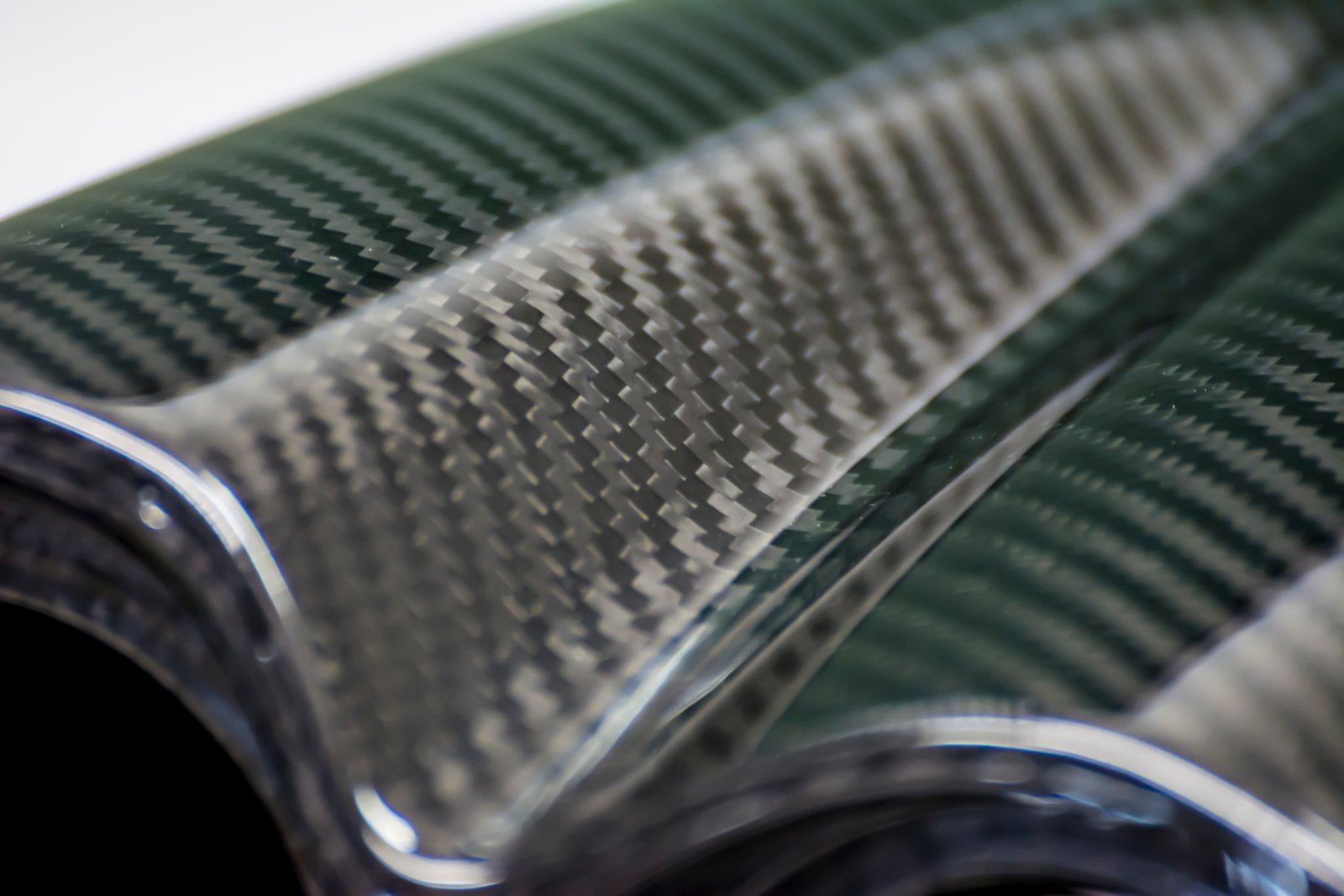
Black carbon fiber composite product material background
Aircraft wings, fuselage reinforcements, and control surfaces prioritize strength-to-weight ratio
Equipo deportivo
Golf clubs, marcos de bicicleta, hockey sticks—all demand stiffness and lightness
Dispositivos médicos
Prótesis, braces, and surgical tools that require strength and biocompatibility
Military and Defense
Helmets, body armor, and UAV components combine protection with maneuverability
Conclusión
Carbon fiber machining offers significant performance advantages—but only when handled with the right knowledge, equipo, and precautions. By mastering the various machining methods such as turning, enrutamiento, waterjet, or laser cutting, you can unlock the full potential of this remarkable composite.
Whether you’re working in aerospace, automotor, sports tech, or precision medical tooling, carbon fiber machining can deliver components that are lighter, más fuerte, and longer-lasting.
For expert assistance, consultation, or custom carbon fiber machining services, feel free to contact our team here.

